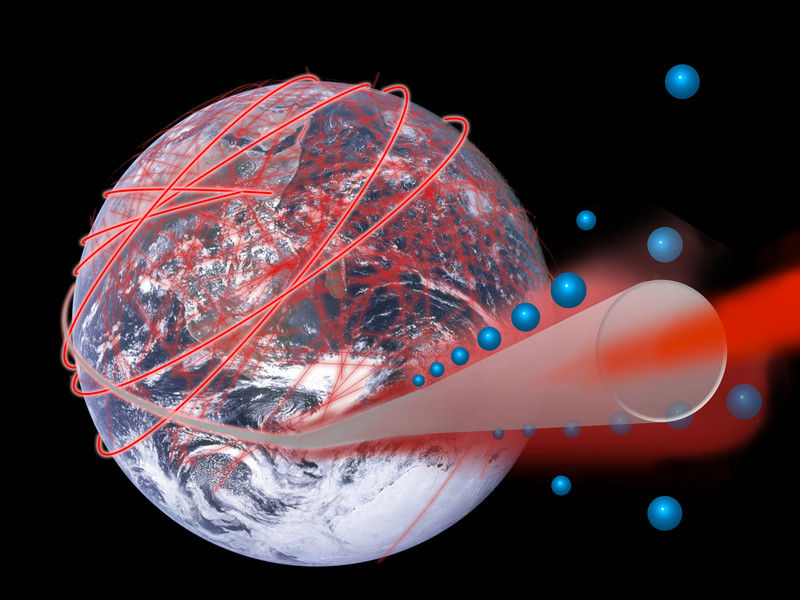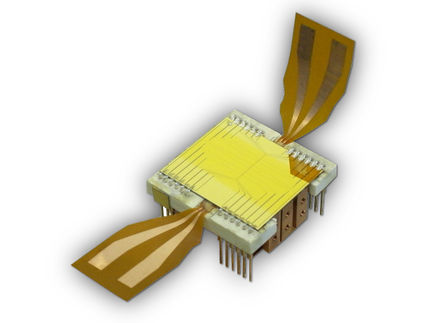Diamonds coupled using quantum physics
diamonds with minute flaws could play a crucial role in the future of quantum technology. For some time now, researchers at TU Wien have been studying the quantum properties of such diamonds, but only now have they succeeded in coupling the specific defects in two such diamonds with one another. This is an important prerequisite for the development of new applications, such as highly sensitive sensors and switches for quantum computers. The results of the research will now be published in the journal Physical Review Letters.
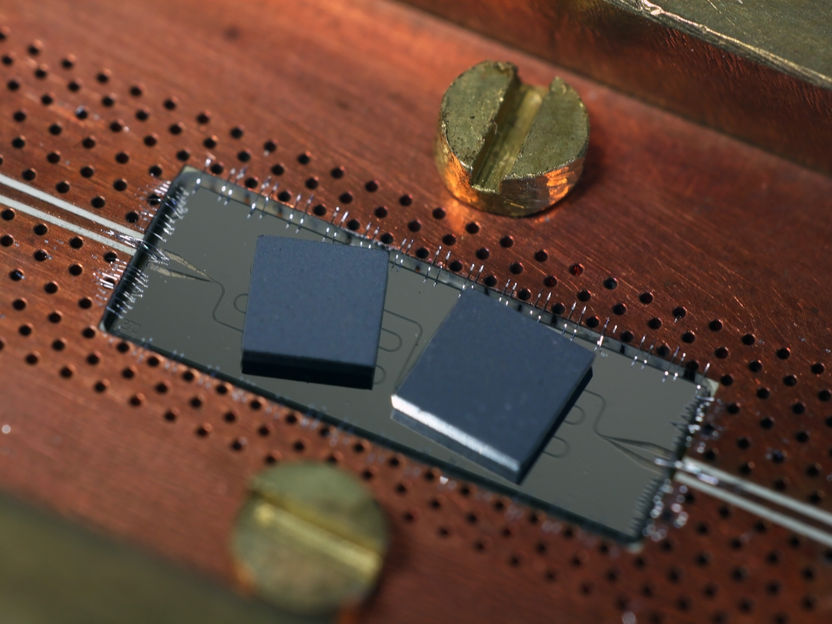
These are two black diamonds on a superconducting chip (12x4mm). The wiggly line is a resonator, coupling the two diamonds.
Copyright: TU Wien
In search of a suitable quantum system
"Unfortunately, quantum states are very fragile and decay very quickly", explains Johannes Majer, head of the hybrid quantum research group, based at the Institute of Atomic and Subatomic Physics at TU Wien. For this reason, in-depth research is being carried out with the aim of finding quantum systems that can be used for technical applications. Even though there are some promising candidates with particular advantages, up until now there has been no system that fulfils all of the requirements simultaneously.
"Diamonds with very specific defects are one potential candidate for making quantum computers a reality", says Johannes Majer. A pure diamond is made up solely of carbon atoms. In some diamonds, however, there can be points where there is a nitrogen atom instead of a carbon atom and neighbouring this, within the atomic structure of the diamond, there is an anomaly where there is no atom at all - this is referred to as a 'vacancy'. This defect, consisting of the nitrogen atom and vacancy, forms a quantum system with a very long-lasting state, making diamonds with these particular flaws ideally suited to quantum experiments.
It all depends on the coupling
One important pre-requisite for many quantum technological applications is indeed the ability to couple such quantum systems together, which up until now has scarcely been possible for diamond systems. "The interaction between two such nitrogen-vacancy defects is extremely weak and only has a reach of around 10 nanometres", says Majer.
However, this feat has now been achieved; albeit with the help of a superconducting quantum chip that produces microwave radiation. For a number of years now, the team at TU Wien has been investigating how diamonds can be manipulated with the help of microwaves: "billions of nitrogen-vacancy defects in diamonds are coupled collectively with a microwave field", says Majer. "In this way, the quantum state of the diamonds can be manipulated and read out."
Now, the team has succeeded in taking the next step: they were able to couple two different diamonds, one at each end of the chip, thus producing an interaction between the two diamonds. "This interaction is mediated by the microwave resonator in the chip in between; here, the resonator plays a similar role to that of a data bus in a regular computer", says Johannes Majer.
The coupling between the two diamonds can be switched on and off selectively: "the two diamonds are rotated against each other at a certain angle", reports Thomas Astner, the lead author of the current work. "Additionally, a magnetic field is applied, with the direction playing a decisive role: if both diamonds are aligned at the same angle within the magnetic field, then they can be coupled using quantum physics. With other magnetic field directions, it is possible to investigate the individual diamonds without coupling". The first steps in the experiment were taken by Noomi Peterschofsky as part of her undergraduate thesis. Thomas Astner and Stefan Nevlacsil subsequently succeeded in demonstrating the coupling of the diamonds in an experiment as part of their Master's thesis.
Original publication
Other news from the department science

Get the chemical industry in your inbox
By submitting this form you agree that LUMITOS AG will send you the newsletter(s) selected above by email. Your data will not be passed on to third parties. Your data will be stored and processed in accordance with our data protection regulations. LUMITOS may contact you by email for the purpose of advertising or market and opinion surveys. You can revoke your consent at any time without giving reasons to LUMITOS AG, Ernst-Augustin-Str. 2, 12489 Berlin, Germany or by e-mail at revoke@lumitos.com with effect for the future. In addition, each email contains a link to unsubscribe from the corresponding newsletter.
Most read news
More news from our other portals
Last viewed contents

BASF commences its smart Verbund project in Zhanjiang - Milestone for BASF’s US$10 billion investment project in China
Glutamate_transporter
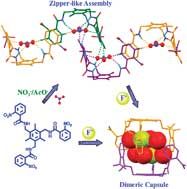
Removing fluoride from drinking water
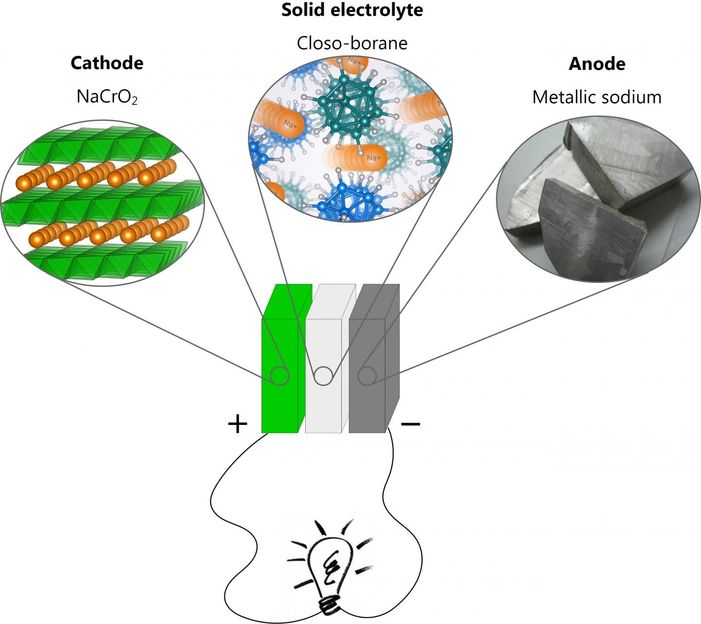
Batteries with better performance and improved safety

Topological insulators - Magnetism is not causing loss of conductivity
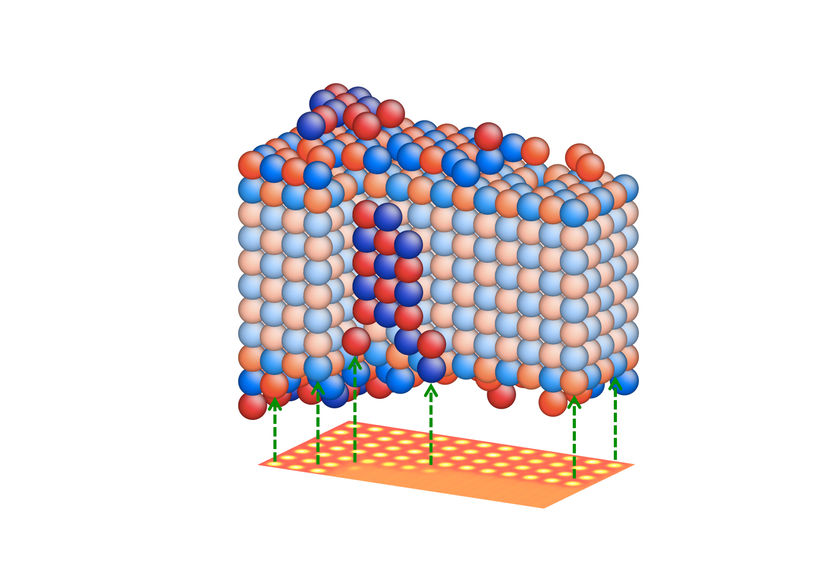
A Breakthrough in Electron Microscopy - Scientists reconstruct third dimension from a single image
HLA-DR5
